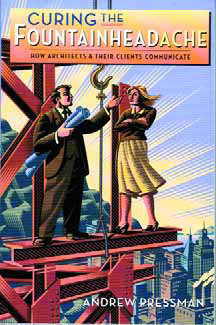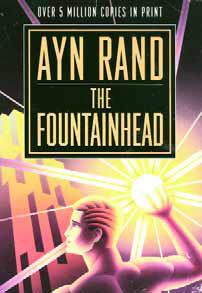The Fountainhead
When it comes to design in the watershaping industry, I see all of us who creatively put pencils to paper as being in states of transition - particularly where I live in the pool/spa realm, where design has traditionally been used as a sales tool and charging for design work was largely unheard of as a service above and beyond construction. All that is changing - and for the better, I think. But with more and more of us gravitating in the direction of professional design consulting either within companies or on our own, what's to guide us as we reach toward that goal? A book I've just read may be a big help: Andrew Pressman's Curing the Fountainhead Ache: How Architects and Their Clients Communicate (Sterling Publishing Co., 2006) has led me to recognize that good design is mostly about establishing effective dialogue with clients. Indeed, he has convinced me that the way I talk to my clients - and, as important, how well I listen to what they have to say in return - has everything to do with
When it comes to design in the watershaping industry, I see all of us who creatively put pencils to paper as being in states of transition - particularly where I live in the pool/spa realm, where design has traditionally been used as a sales tool and charging for design work was largely unheard of as a service above and beyond construction. All that is changing - and for the better, I think. But with more and more of us gravitating in the direction of professional design consulting either within companies or on our own, what's to guide us as we reach toward that goal? A book I've just read may be a big help: Andrew Pressman's Curing the Fountainhead Ache: How Architects and Their Clients Communicate (Sterling Publishing Co., 2006) has led me to recognize that good design is mostly about establishing effective dialogue with clients. Indeed, he has convinced me that the way I talk to my clients - and, as important, how well I listen to what they have to say in return - has everything to do with
Every once in a while, I find it useful to read something purely for inspiration. Especially as the busy season heats up, I truly enjoy the thought of stepping away from the grind and getting lost in the pages of a good book. Most recently, I picked up Ayn Rand's classic, The Fountainhead (Penguin Books, 1994), and found not only a terrifically entertaining story, but one that I also see as useful on the professional front because of its many insights into issues of creativity, design and personal integrity. Let me start by saying that I'm not offering this unusual entry as an endorsement of Rand's controversial philosophy. There are plenty of ideas presented in this long, 700-plus-page book that don't align with the way I see things, and I have no intention here of commenting on Rand's "objectivism" in any way. To me, the core of the story is














